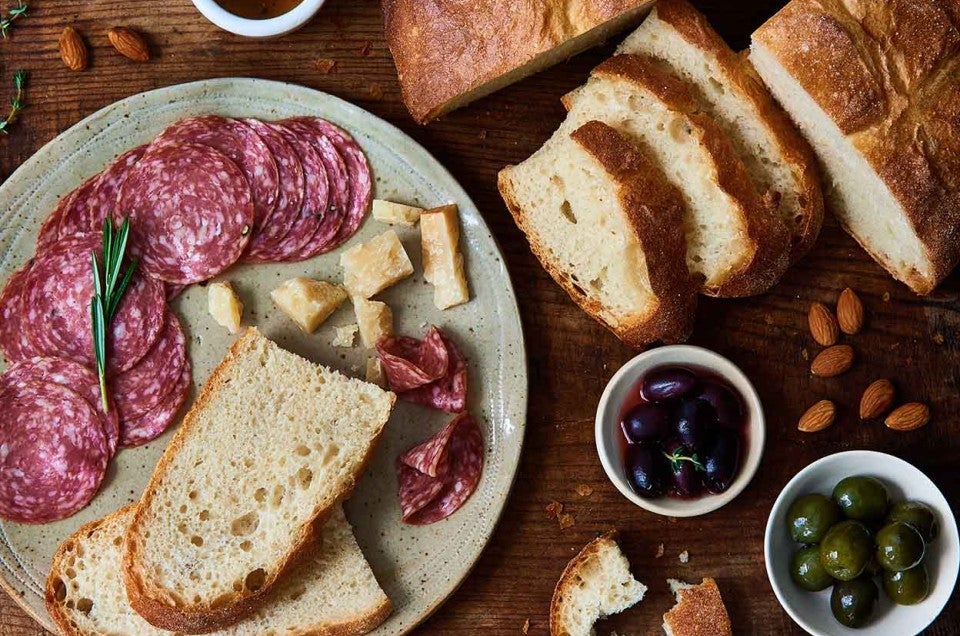Tuscan Bread (Pane Toscano)
This traditional Tuscan bread is as simple as bread can be: it's just yeast, water, and flour mixed together, kneaded, shaped and baked. Why no salt? See "tips," below.

This traditional Tuscan bread is as simple as bread can be: it's just yeast, water, and flour mixed together, kneaded, shaped and baked. Why no salt? See "tips," below.


To make the sponge: Weigh your flour; or measure it by gently spooning it into a cup, then sweeping off any excess. The night before you want to make bread, combine the 1/4 teaspoon yeast, 2/3 cup (152g) warm water, and 1 1/3 cups (160g) flour. Cover and let stand at room temperature overnight.
To make the dough: The next day, combine the sponge with the dough ingredients.
Turn the dough onto a lightly floured work surface and knead until smooth and elastic, about 10 minutes.
Place the dough in a well-greased bowl, turning to coat all sides, cover the bowl, and let the dough rise until doubled in bulk, about 1 hour.
Turn the dough onto a lightly floured work surface without punching it down or handling it roughly. Gently form it into a large, round loaf by pulling all the edges underneath, gathering them and squeezing them together, leaving the top smooth.
If you have a pizza baking stone, place the loaf on a sheet of parchment paper; if you're using a pan, sprinkle some cornmeal on the bottom of the pan, and place the loaf on it. Cover with lightly greased plastic wrap, and set the loaf aside to rise until doubled, about 1 hour.
Preheat the oven to 450°F.
Slash the top of the bread in a tic-tac-toe pattern. If you're using a baking stone, use a peel to transfer the loaf, parchment paper and all, to the stone in the oven. Otherwise, put the pan of bread into the oven.
Bake for 15 minutes, misting bread with water from a spray bottle three times during the 15 minutes.
Reduce the oven heat to 400°F. Bake the bread 25 to 30 minutes longer, until it's golden brown and its interior temperature registers about 200°F on a digital thermometer.
Remove the bread from the oven, and cool it on a rack. Enjoy it fresh within a day or so; freeze for longer storage.

View our privacy policy

